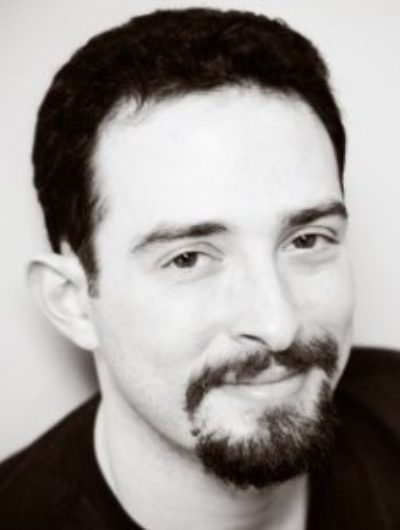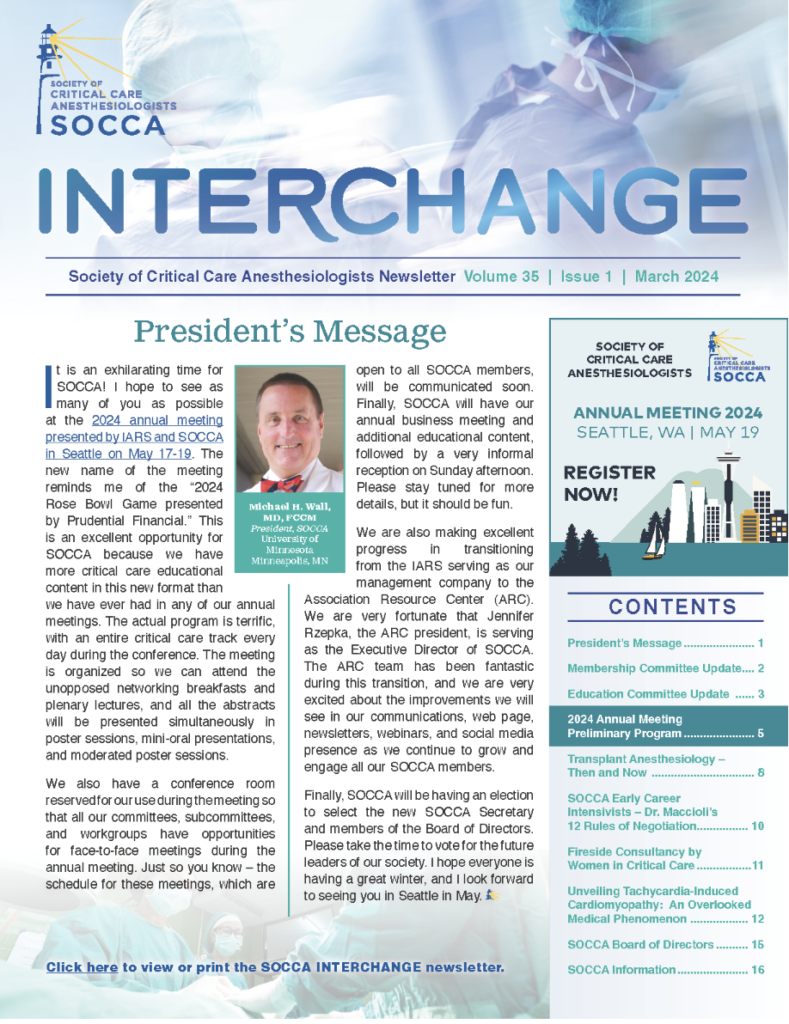Navigating the Catastrophe: Mindfulness Is a Tool That Could Bring Us Closer to Happiness…A Personal Perspective
Burnout, as defined by a loss of enthusiasm for one’s work, a decline in work satisfaction, and an increase in emotional detachment and cynicism, is a growing concern in medicine. In Medscape’s National Physician Burnout and Depression Report 2018, a survey of over 15,000 physicians, 42% of all respondents reported feeling burned out, including 48% of intensivists (the highest rate among all specialties).1 Burnout in medical practitioners has been associated with multiple negative health outcomes, including increased suicidality.2 Besides affecting physician’s satisfaction, burnout also has a significant effect on patient care. Increased feelings of emotional exhaustion among practitioners have been associated with decreased quality of care and even increased mortality in intensive care units.3 Many of the factors that contribute to burnout, such as increased workload, emotional stressors, and decreased control over practice parameters4 may be difficult to ameliorate without substantial changes in our medical system. However, one may still be able to find better ways to cope with unavoidable job- and life-related stressors.
Meditation, one such technique, is a practice that has roots going back thousands of years. Despite this, it has only been brought into the sphere of mainstream medicine in the past 40 years or so, starting with foundational work by Herbert Benson in the 1970s (who referred to the “relaxation response” instead of placing meditation in a cultural or religious context). In 1979, Jon Kabat-Zinn founded the Mindfulness-Based Stress Reduction (MBSR) program at the University of Massachusetts Medical Center to help patients with various types of chronic stress. Mindfulness, in Kabat-Zinn’s words, is defined as “the awareness that arises by paying attention on purpose, in the present moment, and non-judgmentally.”5 MBSR utilizes meditation, yoga, and body awareness exercises to recalibrate patients’ responses to stress and pain. The program is outlined in Kabat-Zinn’s provocatively titled book, Full Catastrophe Living. (Taken from a line in Zorba the Greek, “the full catastrophe” refers to the richness and complexity of life, with its inevitable joys and disappointments.) Meditation and other mindfulness-based interventions have shown promise in the treatment of many conditions, including depression, anxiety, and stress caused by chronic illness.6 There is also evidence that mindfulness can be associated with overall happiness. According to a 2010 study in Science, people are happier when focused on what they are doing, rather than when their minds are wandering.7 MBSR has frequently been the intervention used in research on mindfulness and forms the basis of many other related programs.
Recently, I had the opportunity to delve into mindfulness practice by taking part in a study of Enhanced Stress Resilience Training (ESRT), a program that distills the fundamentals of MBSR from an eight-week intensive course down to six 1.5-hour weekly sessions. The ESRT program is specifically tailored for those in high-stress professions, in this case surgeons and anesthesiologists. The lead investigator for the study is Carter Lebares, an assistant professor of surgery at UCSF. Dr. Lebares, who has been meditating since before medical school, ascribes her interest in mindfulness and its professional applications to the changes in her fellow students during medical school. She was disappointed to see many of her friends lose their idealism and dedication to patients and focus on the financial rewards of the profession. “I really knew these people, really knew the size of their hearts. But somewhere around the second year, they would say, ‘I don’t know what’s going to happen in the next few years, but there better be a damn nice car at the end of it.’ This was very alarming to me; it was like a positive resource for medicine was being lost. And later, when burnout was being discussed more, I realized that I had been seeing burnout unfold.” She believes that mindfulness can be a key to maintaining emotional investment and optimism in medicine.
Dr. Lebares feels that ESRT provides an ideal model for studying the effect of mindfulness on burnout: “I worry about offering something that’s just based on anecdote and personal experience…this is a really well-defined, secular tool that can be evaluated in a rigorous way.” The primary outcomes of her study are changes in self-reported measures of well-being, and secondary outcomes include measures of work performance, cognitive function, and emotional regulation. While this study is likely to be the first step in a larger research program, Dr. Lebares is particularly hopeful that beyond improving individual mental health, mindfulness strategies can improve team dynamics in the OR. “Groups that work on a complex task as a team really influence each other. I want to know what it would be like if the surgeon and the anesthesiologist set a tone of being very present and mindful, whether that would be reflected in better work or better outcomes.”
At the time I started the ESRT course, I knew little of this background; what I did know was that I was under a lot of stress, both professional and personal, and UCSF was coincidentally offering faculty an innovative course in stress management. Prior to the first class, I underwent a small battery of tests assessing my cognitive and attentional abilities and filled out a detailed survey on my mental health and self-care. The researchers also observed the performance of most study participants in the OR environment (I did not take part in this portion myself due to the fact that I do my clinical work at the San Francisco VA rather than one of the main UCSF hospitals). When I walked into the first ESRT class, the scene was a bit surreal: a group of surgeons and anesthesiologists, dressed in a variety of scrubs, formal shirts and slacks, and workout gear, sat cross-legged on yoga mats arranged in a circle. Our teacher explained the goals of the course and the overall concept of mindfulness and then jumped right in to some basic breathing and meditation exercises. A major component of ESRT that we were introduced to in the first class is the “body scan,” in which we focused our awareness of each part of our body in turn and tried to monitor our sensations, without any judgment or attempts to change things. This made me aware of what, to the uninitiated, is a surprising revelation: meditation, when done correctly, can be quite difficult and not necessarily relaxing. Kabat-Zinn freely acknowledges this in his book, saying, “it can be stressful to take the stress reduction program.”8
Another common theme was that mindfulness practices are difficult to teach from a purely intellectual perspective; engaging in such practice is necessary and ultimately more important to understanding. Therefore, while each class was accompanied with various handouts and references, these were not the focus and our only “homework” was engaging in meditation or other exercises, ideally for 20 minutes per day. Despite this, there was some conceptual framework laid out to focus our thoughts. Each class had a slightly different theme and involved variations on mindfulness principles. These included “There is more right with you than wrong with you,” and “Stress is inevitable, but suffering can be optional.” The themes would generally recur a few times during guided meditations. The course culminated with a “mindful hike” in the Presidio. Follow-up included a repeat of the initial survey and testing; the results are not yet published.
So did ESRT make a difference in my life? I do feel noticeably more centered and better able to deal with stress after the course. The mindfulness exercises, while not easy, were interesting and rewarding, especially to someone who enjoys new challenges. I haven’t seen a clear difference in my cognitive performance, but this might be harder to elicit. Crucially, ESRT provided an excuse for me to spend a little time each week on my own well-being, and made me realize that the best way to ensure that one takes time for self-care is to make a dedicated commitment to doing so. Ironically, it often seems that the biggest obstacle physicians face to taking time for ourselves is that we feel guilty using what little spare time we have for something as “frivolous” as our own health when there is so much else that needs our attention from minute to minute. Carving out such time, though, is essential even if it often requires advance scheduling. Despite the difficulty of adding another commitment to the day, investing a few minutes on meditation, yoga, or other such practice can make a real difference in our mental and physical health, and even benefit our patients as well.
If hospitals and departments devoted resources to making mindfulness exercises more available and practical, such as setting aside time in the daily schedule for meditation sessions or organizing group classes, and made it clear that such activities were not just permitted but encouraged, this investment might be returned in the form of practitioners who are more resilient, less cynical, and better able to serve their patients and themselves. As Kabat-Zinn puts it, mindfulness is an opportunity “to use yourself as a laboratory to find out who you are and what you are capable of.”9 I look forward to seeing the results of Dr. Labares’ research on the topic, and in the spirit of ESRT, I invite my fellow SOCCA members not to just read about mindfulness, but to experience it for themselves. If you have ideas for how to integrate these activities into our busy lives, or want to share your experience with mindfulness and its many variations, please email us at soccanewsletter@socca.org or Jordan.brand@ucsf.edu.
References
- https://www.medscape.com/slideshow/2018-lifestyle-burnout-depression-6009235#1
- Dyrbye LN et al. Burnout and suicidal ideation among U.S. Medical Students. Annals of Internal Medicine 2008, 149(5): 334-41.
- Welp A et al. Emotional exhaustion and workload predict clinician-rated and objective patient safety. Frontiers in Psychology 2015, 5: 1-13.
- Shanafelt T et al. Oncologist burnout: causes, consequences, and responses. Journal of Clinical Oncology 2012, 20(11): 1235-41.
- In Kabat-Zinn J, Full catastrophe living. Bantam Books, 1990; p. xxxv.
- Hempel S, Shekelle PG, et al. Evidence map of mindfulness. Report prepared for Department of Veterans Affairs/Veterans Health Administration Quality Enhancement Research Initiative, 2004, p. 7.
- Killingsworth MA, Gilbert DT. A wandering mind is an unhappy mind. Science 2010, 330(6006): 932.
- Kabat-Zinn, p. xlix.
- Kabat-Zinn, p. lxv.




































